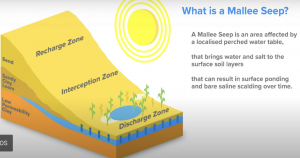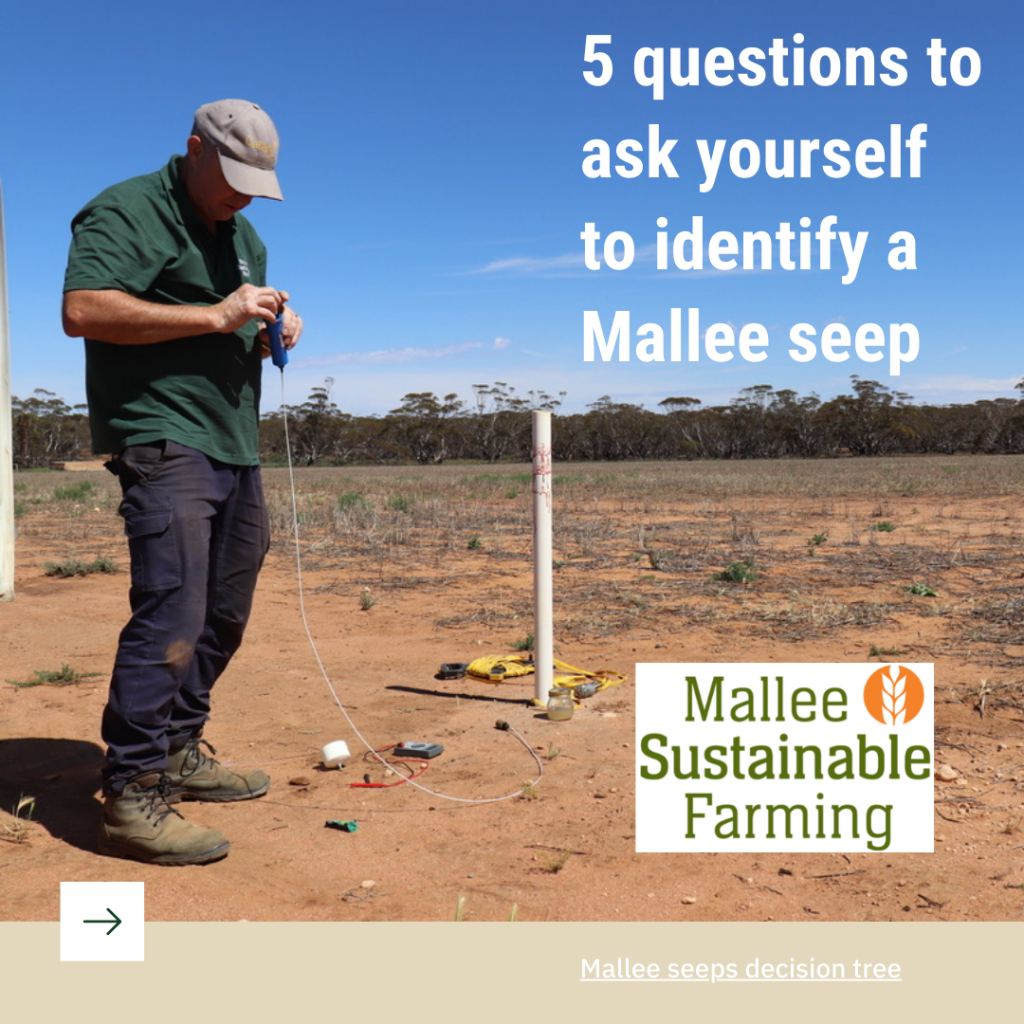When you have a Mallee seep, where do you start with identifying the problem and coming up with a management plan?
Chris McDonough, Insight Extension for Agriculture, talks through the 5 key questions you need to ask before you get you started.
1. Have you got a Mallee seep?
It’s important to not confuse Mallee seeps from other land degradation issues such as dry saline land, regional groundwater and creek line salinity. If you have been farming in the area for a long time you will likely understand the issues you are dealing with, however in some situations more than one land degradation issue may be present.
2. Where is the water coming from?
Answering this question will help you clarify if you have a Mallee seep and where to take action. Taking into consideration the topograhy of the landscape will help you make this assessment.
Water enters the system at the top of a sandhill or rise, known as the recharge zone, where it is under utilised and moves down the profile until it hits an impermeable clay layer.
The excess water then moves horizontally until it pools near the surface and where it can become visible. This is the bottom of a sandhill and is known as the discharge zone.
Water doesn’t always come to the surface, especially in the early stages of a seep. A piezometer can be installed in the discharge zone to measure the depth to water and access water for quality testing.

3. What stage is the seep at?
This is important to identify as this will have a big impact on the management strategies that you will need to implement to fix the problem.
Is the seep a new site? The crops may show good growth in these areas as the excess water at depth is improving yield in the short term.
Is it an intermediate seep where the crop is starting to become negatively impacted by water logging and possibly rising salinity?
Is it a severe site where conditions have become unfavourable for crop growth? The area may be bare, scalded and growing in size with or without water flowing across the surface.
4. What is the quality of the water in the discharge zone?
It’s important to identify the salinity of the water. It may be possible to collect this from the surface in a severe situation but it is more likely that you will need to install a piezometer to collect water from depth. (Instructions on how to install a piezometer can be found on the Mallee seeps decision tree).
A water sample can be tested with a salinity meter or a simple taste test can give you an indication of how salty the water is.
Some management options are ‘off the table’ if the water is very salty therefore it’s important to know what you are dealing with at the beginning. It also helps provide a benchmark to monitor progress in the seep remediation going forward.
What do you do about it?
The Mallee seeps decision tree is the recommended resource for determining the best management option for your situation.
The Mallee seeps decision tree can help you with seeps diagnosis and assessing the severity of a seep.
Work through your own paddock scenario and the decision tree will help you find the most suitable management plan to stop the spread and rehabilitate seeps on farm.
Visit https://msfp.org.au/mallee-seeps-deci…
-ends-


